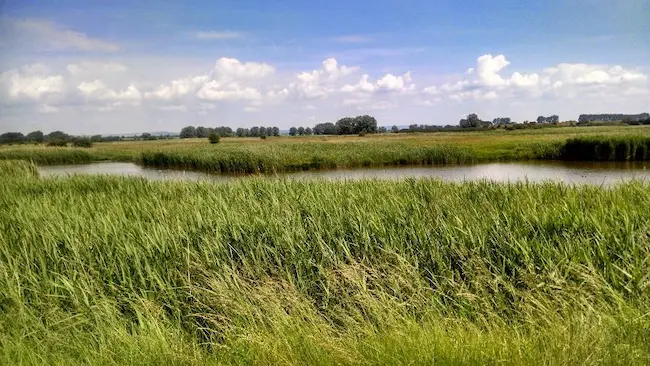Top Tips to Build a Career in Rewilding
Rewilding is a fascinating and growing job field that focuses on restoring ecosystems to their natural state and reintroducing species to enhance biodiversity.
Here’s our guide to pursuing a career in rewilding, key tips to secure a job role and the rewards of working in this incredible field.
The Value of a Rewilding Career

Rewilding is more than just a conservation strategy, it’s a transformational approach to repairing ecosystems and fostering coexistence between human society and nature.
Its value extends across a sustainable future’s environmental, social, and economic dimensions:
1. Restoring Ecosystems and Biodiversity
Rewilding helps reverse biodiversity loss; restoring habitats and reintroducing the keystone species that play critical roles in maintaining ecological balance (e.g., wolves controlling deer populations or beavers creating wetland habitats).
In time, this restoration allows ecosystems to self-regulate and re-establishing natural processes like predation, seed dispersal, and nutrient cycling.
2. Mitigating Climate Change
Healthy ecosystems, such as forests, wetlands, and grasslands, act as carbon sinks, helping to absorb and store CO₂ from the atmosphere.
Rewilding degraded landscapes can reduce the risk of flooding, soil erosion, and desertification, which are exacerbated by climate change.
3. Improving Human Well-Being
Access to rewilded spaces can improve mental and physical health by providing opportunities for outdoor recreation and connection with nature.
Rewilding promotes environmental awareness and a sense of stewardship, encouraging communities to reconnect with their natural surroundings.
4. Strengthening Local Economies
Rewilding initiatives can create jobs in conservation, tourism, and ecosystem services.
Nature-based tourism, such as wildlife safaris and birdwatching, often flourishes in rewilded areas, benefiting local communities.
5. Inspiring Hope
Rewilding is an optimistic response to environmental degradation. It shows that ecosystems, when given space and time, can recover and thrive.
Key Tips to Secure a Rewilding Job Role

1. Understand the Concept of Rewilding
2. Pursue Relevant Education
3. Gain Practical Experience
4. Develop Valuable Key Skills
5. Network Within the Field
6. Specialise Based on Interests
7. Look for Job Opportunities
8. Start Local
9. Stay Up-to-Date
10. Consider Advocacy and Education
Rewards of Working in Rewilding

Pursuing a career in rewilding can be deeply fulfilling, offering both tangible and intangible benefits:
Meaningful Impact: Knowing that your work contributes to the restoration of nature and the survival of species offers a profound sense of purpose. This is both motivating and rewarding.
Immersion in Nature: Many rewilding roles involve outdoor work in some of the world’s most beautiful and remote landscapes, providing you direct experience with nature. You’ll develop a deep appreciation for ecological systems and their interconnectedness.
Opportunities for Innovation: Rewilding is an emerging and dynamic field, offering opportunities to explore new techniques and approaches. Recent examples include using drones for habitat monitoring or collaborating with AI to track wildlife.
Collaboration and Community: Rewilding projects often involve working with passionate, like-minded people, from ecologists and conservationists to local communities and policymakers.
Diverse Career Pathways: Rewilding offers a broad range of potential roles, from scientific research and fieldwork to education, policy, and advocacy. For example, you might consider specialising in species reintroduction, habitat restoration, or even community engagement and eco-tourism.
Personal Growth: Working in rewilding can teach resilience, adaptability, and problem-solving as you navigate the complexities of restoring ecosystems in a changing world. You’ll gain skills in ecology, communication, and project management that are transferable across the environmental sector.
Inspiring Future Generations: In a rewilding job, you have the opportunity to educate others about the importance of living in harmony with nature, fostering a cultural shift toward sustainability.
Working For a Wilder Future

The value of rewilding lies in its potential to heal the planet, empower communities, and provide hope in the face of environmental challenges.
Working in the rewilding field is not just a job or career, it’s a purpose that allows you to make a tangible difference while connecting deeply with nature.
To support you further, we recommend you check other these extra resources:
Rewilding Explained: Benefits, Challenges & Examples
What is Urban Rewilding: Overview & Examples
You could also make a start in your own garden, with help from our Simple Tips to Rewild Your Garden.
Plus, if your consider other potential avenues to work closer to nature and support a sustainable future, then consider checking out our other guidance resources:
Careers in Climate Change: Key Skills & Job Roles
Sustainability Career Trends in Focus
Key Skills For Sustainability Job Success
Any other questions or queries, then feel free to get in touch in the comments section below, via our Contact & Collaborate page, or at our social media channels linked at the bottom of this page.





